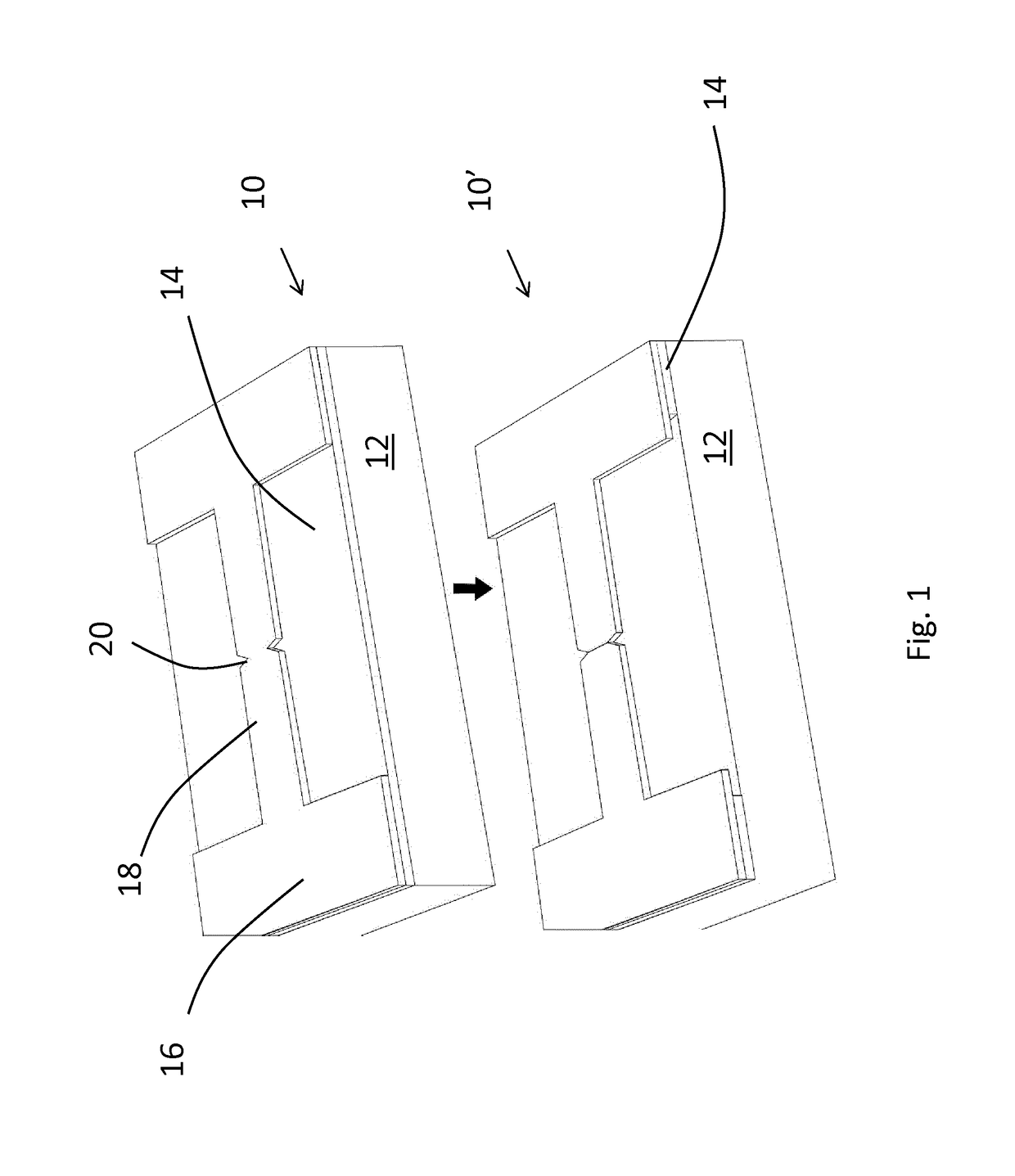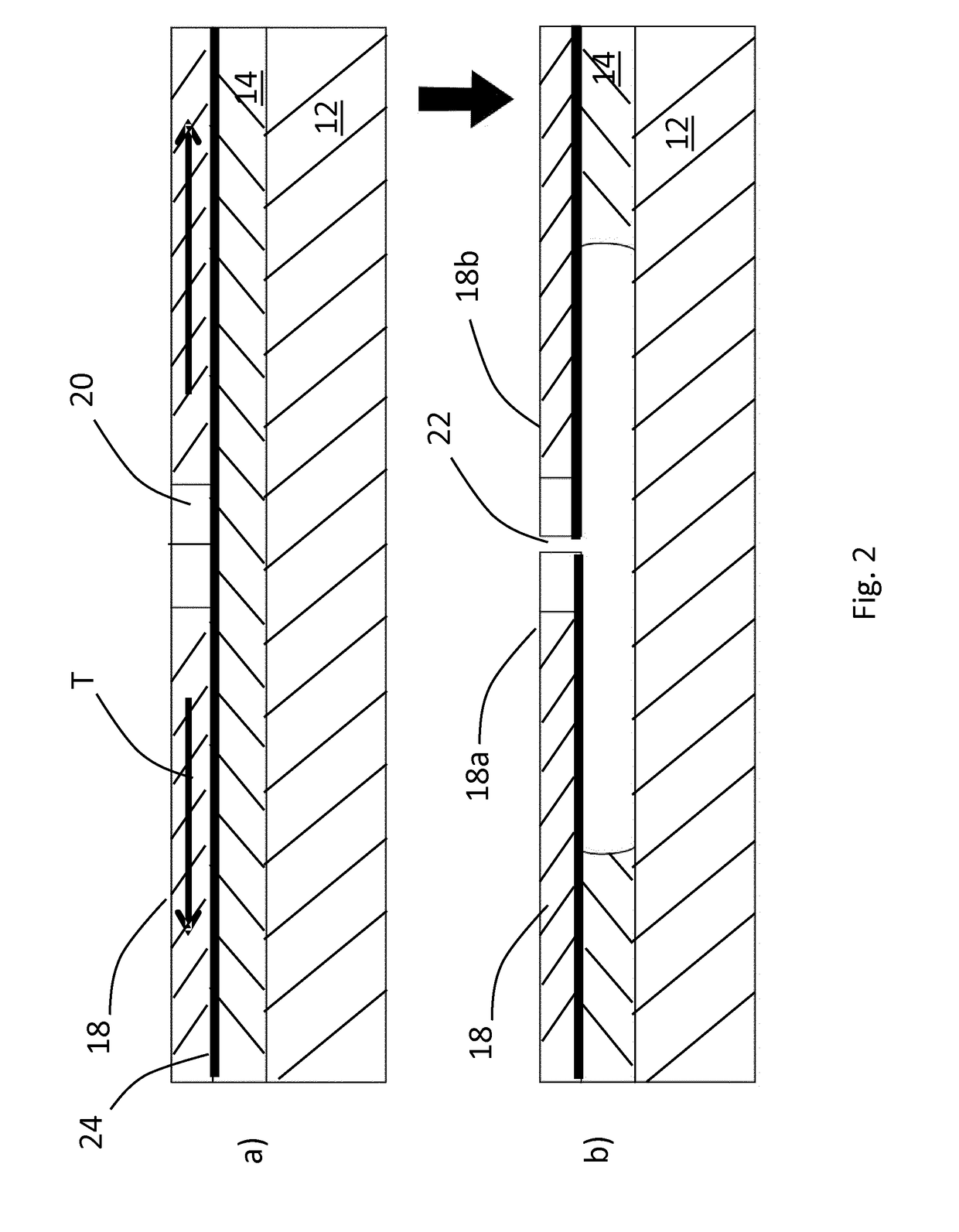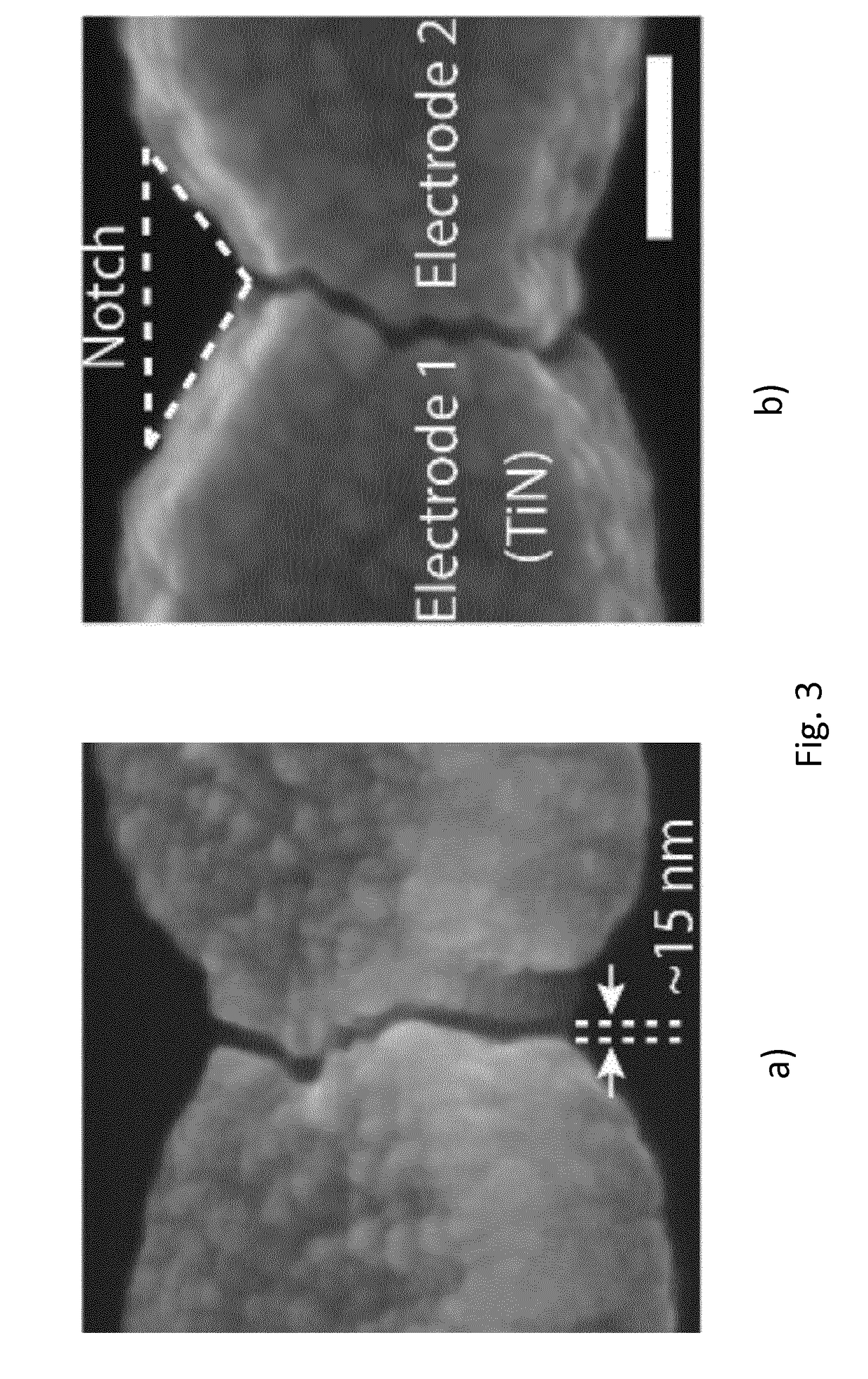Crack structures, tunneling junctions using crack structures and methods of making same
a crack structure and tunnel junction technology, applied in the field of crack structures, tunneling junctions using crack structures and methods of making same, can solve the problems of crack formation, setting the built-in stress,
- Summary
- Abstract
- Description
- Claims
- Application Information
AI Technical Summary
Benefits of technology
Problems solved by technology
Method used
Image
Examples
example
[0049]The crack-junction method is illustrated by the process sequence in FIG. 4. In the crack-junction method, a conductive, suitably metallic, thin film 26, suitably provided between dielectric layers 28, under built-in stress is placed on top of a sacrificial layer 32 on a substrate 34 and patterned to outline a notched 36 electrode bridge as depicted in FIG. 3d. Next, FIG. 4e, the sacrificial material 32 supporting the electrode bridge is selectively removed using isotropic chemical etching, illustrated by arrows. In so doing, the thin film 26 is locally detached from the substrate and the tensile stress that is stored in the thin electrode film is released. This, in turn, causes the build-up of stress in the film at the notch of the electrode bridge. The initiation of a crack at the notch allows contraction of the thin film electrodes in opposite directions, and the formation of a nanoscale gap 38 that is separating the electrodes as illustrated in FIG. 4f. However, it is possi...
PUM
| Property | Measurement | Unit |
|---|---|---|
| width | aaaaa | aaaaa |
| width | aaaaa | aaaaa |
| diameter | aaaaa | aaaaa |
Abstract
Description
Claims
Application Information
 Login to View More
Login to View More - R&D
- Intellectual Property
- Life Sciences
- Materials
- Tech Scout
- Unparalleled Data Quality
- Higher Quality Content
- 60% Fewer Hallucinations
Browse by: Latest US Patents, China's latest patents, Technical Efficacy Thesaurus, Application Domain, Technology Topic, Popular Technical Reports.
© 2025 PatSnap. All rights reserved.Legal|Privacy policy|Modern Slavery Act Transparency Statement|Sitemap|About US| Contact US: help@patsnap.com



